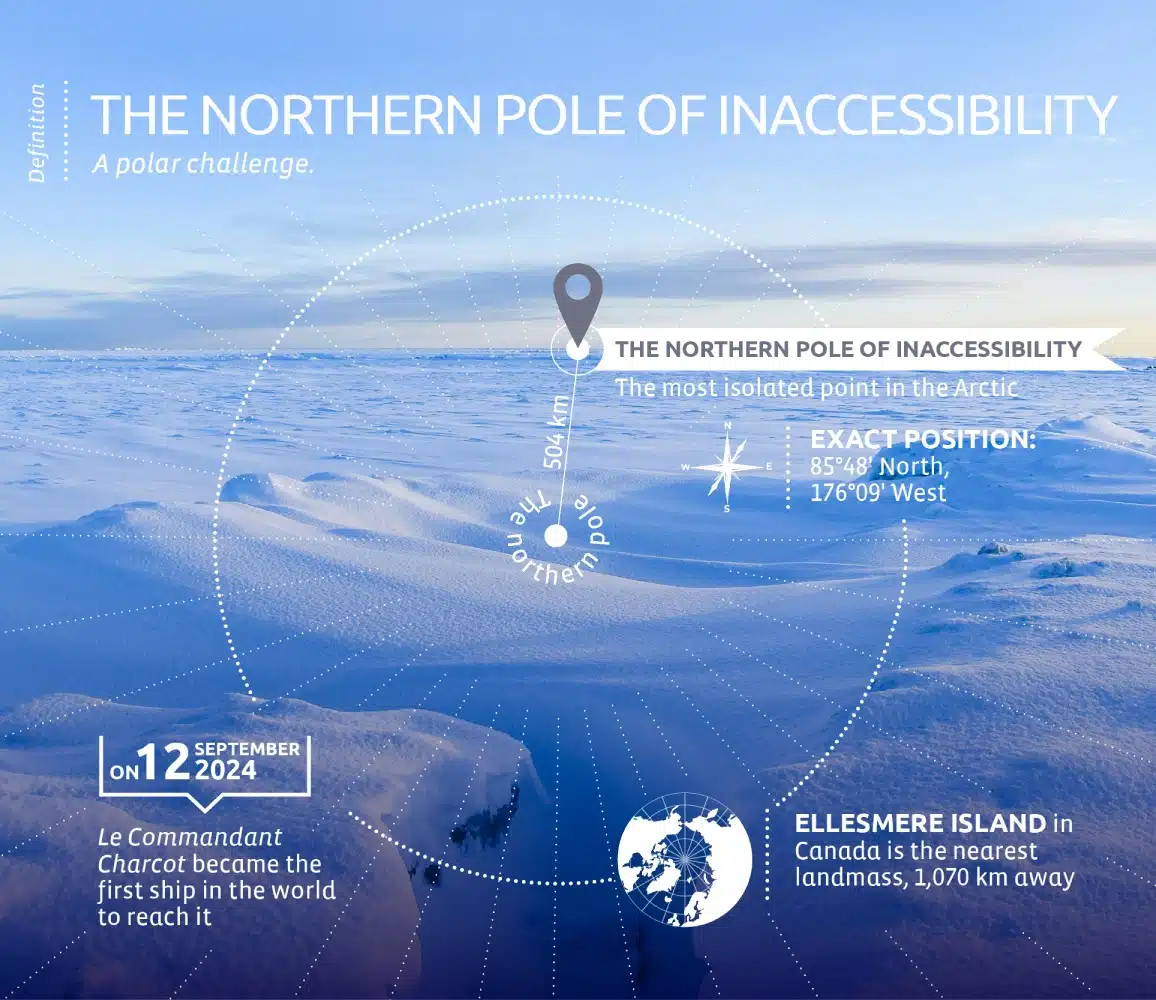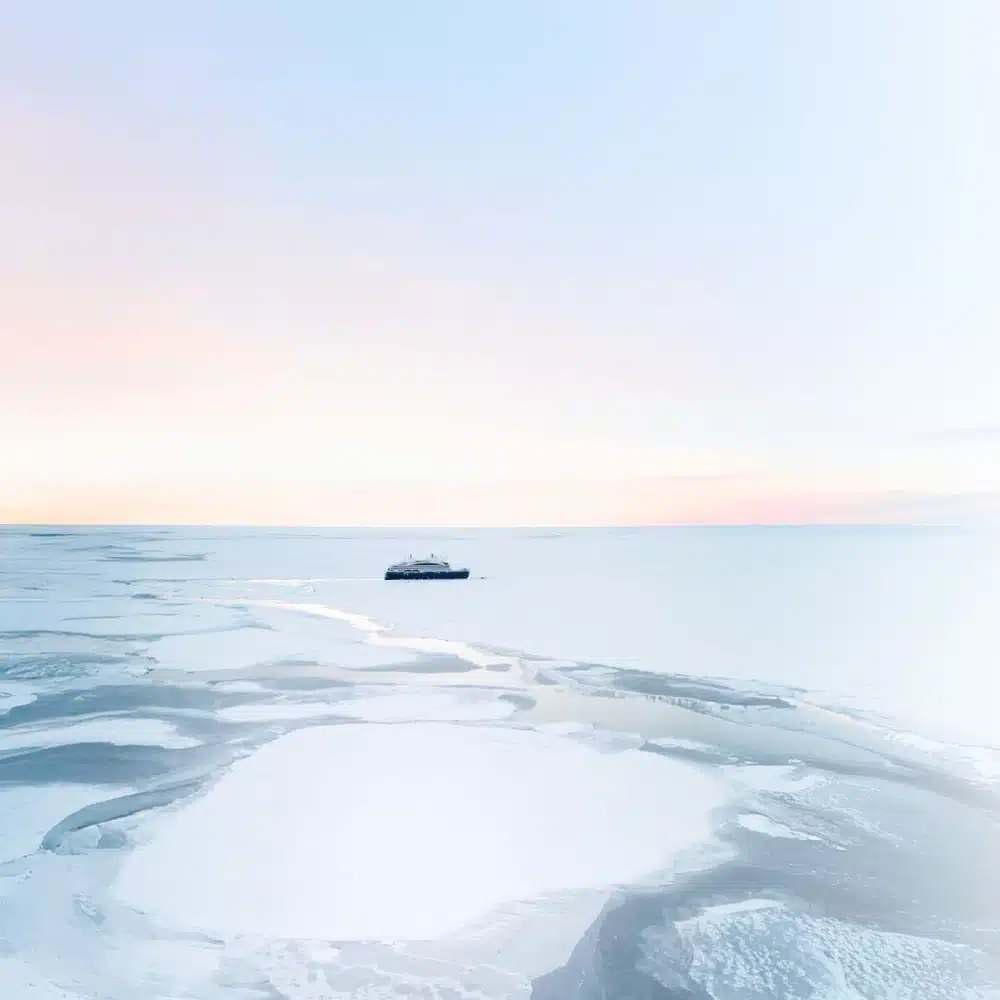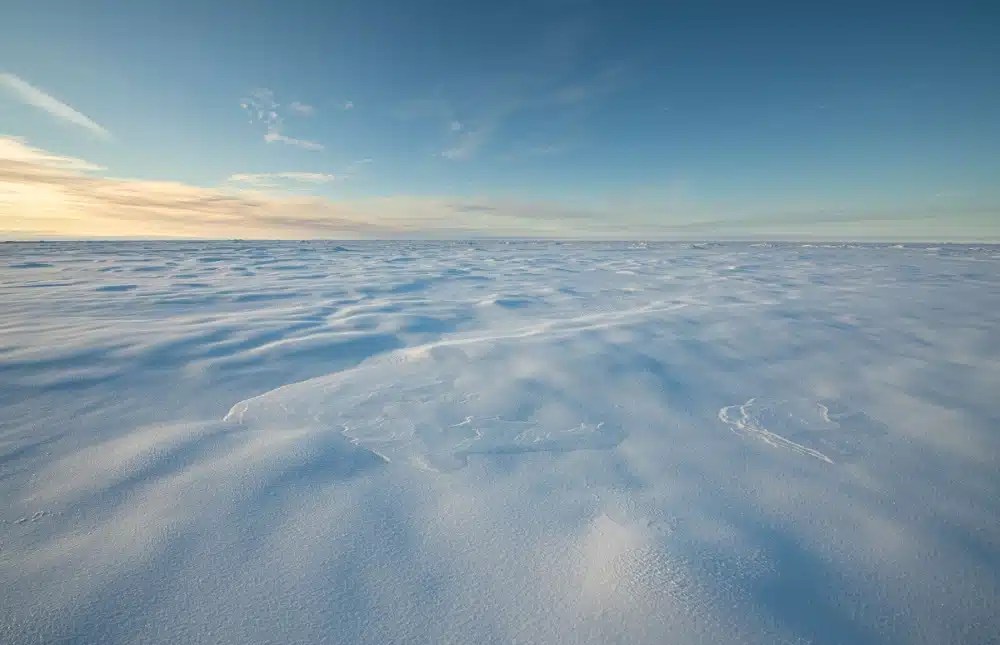The Arctic’s holy grail
The northern pole of inaccessibility at the heart of the Arctic Ocean has attracted Arctic explorers since the early twentieth century. As the furthest point from land in this polar environment, it is sometimes referred to as the Nemo Point of the Arctic, and remains difficult to reach.
A symbolic pole
More than 1,000 kilometres separate the northern pole of inaccessibility from the nearest land masses, namely Ellesmere Island in Canada, Henrietta Island in the East Siberian Sea and Komsomolets Island in the Russian archipelago of Severnaya Zemlya. It was first referenced in 1909 by Russian admiral Alexander Koltchak, then made official around 1920 by the Canadian explorer Vilhjálmur Stefansson, although its location has changed slightly since then thanks to satellite technology.
Its current geographical coordinates are 85°48′ North, 176°09′ West. It is thus distinguished from the Geographic North Pole which marks the Earth’s axis of rotation (504 km away), and the northern magnetic pole, the moving point where the lines of the Earth’s magnetic field converge.
Point Nemo: even further away
Although it is a long way from land, the northern pole of inaccessibility is not the most isolated place in the world. Point Nemo is in the South Pacific 2,688 km from the nearest coastline (coordinates: 48°52′ South 123°23′ West).

A coveted place
Reaching the northern pole of inaccessibility is considered one of the great challenges of polar exploration. The remoteness, ice drift and extreme conditions make this a perilous and uncertain undertaking. Sir Ernest Shackleton dreamt of it, but never achieved it. In 1928, the Australian Sir Hubert Wilkins was said to have been the first to fly over it during his crossing of the Arctic Ocean.
Since then, several expeditions have attempted to reach this mythical point on the ice pack. British explorer Jim McNeill made a number of unsuccessful attempts on skis between 2000 and 2010. But on 12 September 2024, the PONANT ship Le Commandant Charcot became the first vessel in the world to reach it, with Commander Étienne Garcia at the helm. This feat was made possible by the high polar exploration vessel’s unique design, which included hybrid electric propulsion and liquefied natural gas.
A natural laboratory like no other in the world
In addition to the symbolic significance of such an achievement, exploring this area is of unquestionable scientific interest. Thanks to the PONANT Science program, twenty scientists were able to survey the pack ice aboard the Commandant Charcot. Measuring the ice’s thickness, monitoring its evolution and recording traces of plastic pollution miles away from all human activity are invaluable tasks for the future of these little-known places and the planet as a whole.
Photos credits: ©Studio PONANT/O. Blaud, A. Le Guen

PONANT takes you there
Push the boundaries of polar exploration



